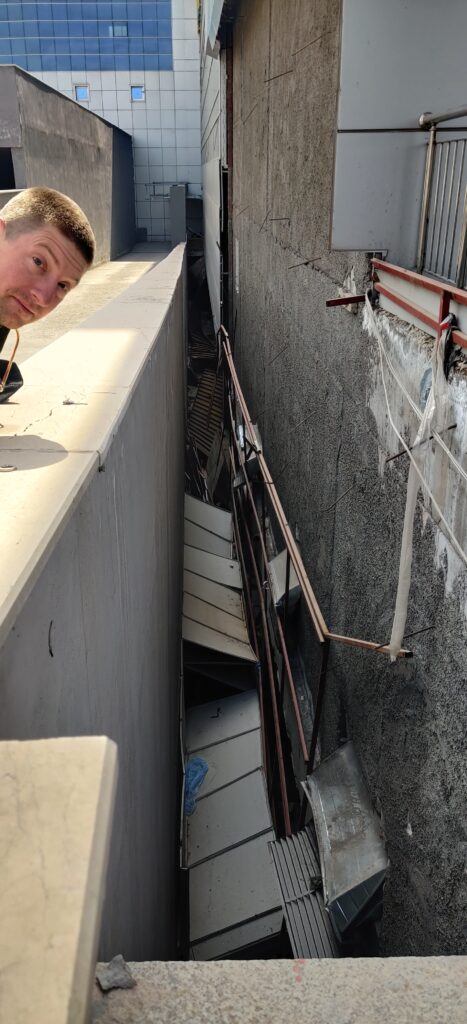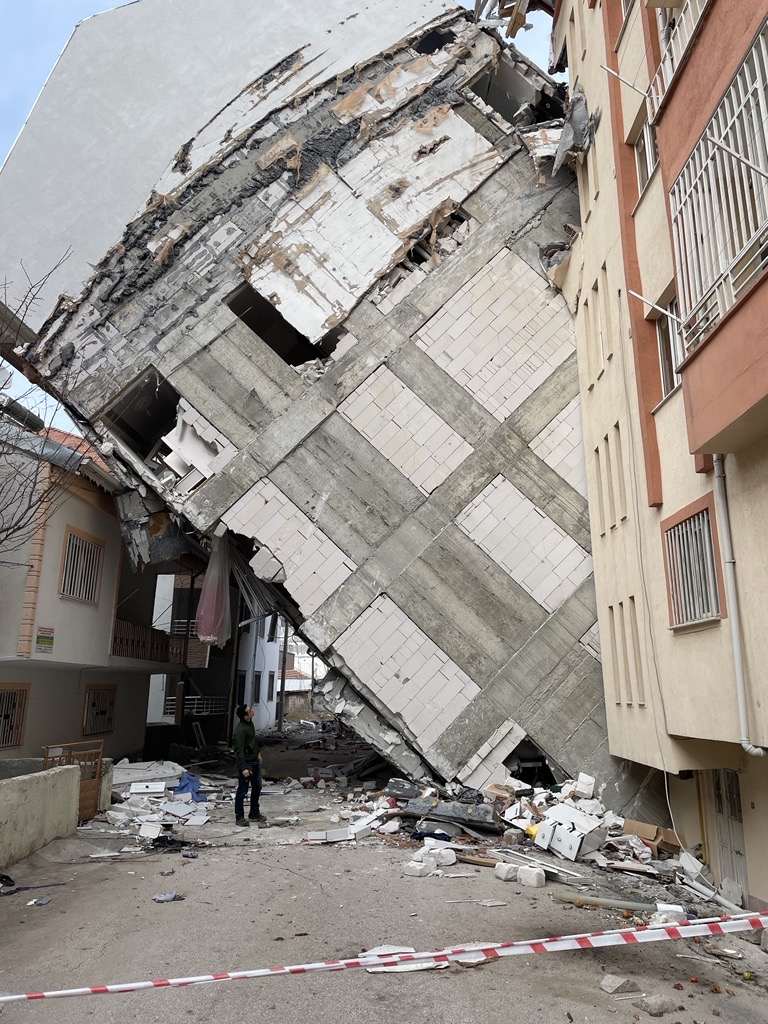At the Northern End of the Fault Rupture in Malatya, Turkey
March 8, 2023 – Day 3, Team 2
We began the day with a long drive to the city of Malatya, the northernmost city along the fault rupture, which has a population of approximately half a million people. The first site visited was a university teaching hospital campus which consisted of a 200-bed main hospital built in 2011 and a women and children’s wing built in (approximately) 2019. The main hospital was a shear wall building and contained several seismic separations while the women and children’s wing was a base isolated shear wall building.
Based on discussions with a hospital facility engineer, the buildings saw relatively little interruption to water and power (~48 hours of downtime), but a fire sprinkler line on the 8th floor ruptured and caused flooding. We observed some damage to ceilings and finishes but many key functions were relatively unscathed, such as the operating rooms. The base isolators in the women and children’s wing also performed well, but there were issues with nonstructural elements that interacted with the seismic isolation moat. For example, we observed an existing fire sprinkler line in the basement that was heavily damaged or distorted where it crossed the moat. Fortunately, the sprinkler line was flexible enough to deform without leaking. Additionally, we saw nonstructural walls in the basement that were cracked because they were not built with the building displacement in mind. Outside of hospital in the mechanical yard, the anchorage for various pieces of equipment appeared to be relatively undamaged.
Overall, we were pleased to see that the hospital campus performed well and was able to serve the community with little downtime.

Interior view of main hospital corridor. There is minor cracking in the corridor partition walls and the seismic separation does not extend across the ceiling. Fortunately, the damage was relatively minor.

Fire sprinkler line and hanger rods in hospital basement damaged due to seismic movement across the isolation plane.

Basement partition walls experienced damage due to building movement at the isolation plane. A seismic separation was not provided between the nonstructural walls and the building framing.

Adam looks over a partial collapse of the façade at the women and children’s wing.
On the return journey, the team stopped briefly to view two unique failures. The first was a retaining wall failure adjacent to the highway. Rocks and debris had spilled into the highway causing the closure of one lane of traffic. The other unique and now infamous failure was in the town of Golbasi where a building had fallen over due to liquefaction of the soil beneath the foundation. The team noticed standing water in the basements of multiple surrounding buildings, suggesting a high water table in the area. This helped confirm evidence of liquefaction and explained the significant earthquake-induced settlement.

Justin stands next to the damaged retaining wall to illustrate the magnitude of the failure.

Infamous leaning building in Golbasi that experienced foundation failure. Justin gets a closer look to provide a sense of scale for the structure.
